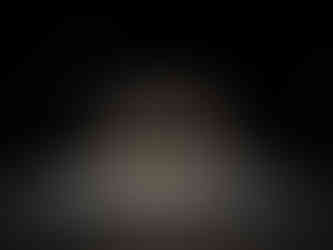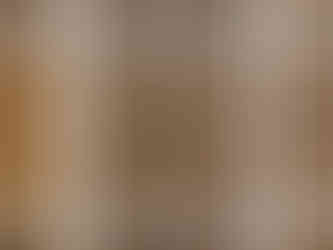Staying afloat
- Berfin Küçükaçar
- 5 gün önce
- 8 dakikada okunur
Under Pressure Above Water, which approaches the intertwined crises of our time through the lens of individual fragility and collective resilience, takes place at Arter between June 12, 2025 and January 11, 2026 under the curatorship of Nilüfer Şaşmazer. We spoke with Şaşmazer about how the concepts of anxiety, pressure, and vulnerability take form in the exhibition, and the ways in which the participating artists develop modes of resistance in response to them
Interview: Berfin Küçükaçar

Nilüfer Şaşmazer
Under Pressure Above Water centers on the overlapping crises of our time. From environmental disasters to economic instability, from migration to political oppression, these themes make visible the shared sentiment of anxiety that defines the age of global uncertainty. Through these interconnected concerns, what questions does the exhibition seek to open for discussion?
The exhibition’s first section, located on the ground floor of Arter, focuses on how we experience the present moment; both individually and collectively. The works in this part trace the bodily, mental, and emotional effects of the climate of anxiety felt on a global scale, while also seeking to create a sense of shared experience. On the lower floor, the focus shifts toward how artists cope with this atmosphere of pressure and what forms of resistance they develop. Among these strategies of defiance or endurance are approaches that are deeply poetic and abstract, as well as others that embrace more direct, physical modes of confrontation. The exhibition’s central perspective is shaped around the relationship between anxiety and politics—a subject that has been discussed by numerous writers and thinkers since the mid-20th century. Hannah Arendt argued that totalitarian regimes erase individual agency; Zygmunt Bauman described how the “liquid fears” of modern society perpetuate a constant sense of uncertainty; Judith Butler examined how the feeling of unending threat becomes a means of control; and Mark Fisher observed that neoliberalism imposes the idea of “no alternative,” cultivating a culture of collective anxiety. Today, we live under an even more fragmented yet pervasive anxiety, stemming from the global socio-political and economic systems that confine us. At precisely this juncture, the exhibition brings into view the attitudes and resistance strategies artists develop in response to injustice, censorship, and totalitarian tendencies; revealing them within a dynamic dialectic of action and reaction.
Left: Claire Fontaine, Untitled (destroy and rejuvenate), 2004, Printed matchbox with approximately 40 matchsticks, 5,5 x 3,5 x 1,5 cm, Ed. AP II, Courtesy of the artist and T293, Rome
Right: Nadia Kaabi-Linke, Smooth Criminal, 2012, Powder coated steel, 120 x 230 cm, Arter Collection
Under Pressure Above Water is structured around two intertwined notions: “pressure” on the ground floor of Arter, and “staying afloat” on floor -1. When designing the transition between these levels, what kind of intellectual and emotional journey did you envision for the viewer throughout the exhibition? How did the spatial arrangement guide or shape this experience?
The first element that shaped my approach during the preparation of the exhibition was developing a structure that would consider the two distinct gallery spaces. Unlike Arter’s other exhibition areas, these two spaces are not directly connected, which led me to imagine a show with a dual structure. For some time, I had been drawn both to works that focus on the prevailing sense of anxiety that governs today’s world and to those that point to a latent potential within that anxiety—a drive for renewal intertwined with destruction. When I realized that these two emotional states actually exist in a kind of causal relationship, the structure of the exhibition began to take shape. Over time, conceptual pairs such as surface/underground, pressure/eruption, potential/agency, and major systems/minor actions emerged and were distributed across the two floors. I felt that what would tie these dualities together had to be the artists themselves. Thus, while shaping the selection, I prioritized inviting artists who could engage with both emotional and intellectual registers. This approach not only helped me focus by narrowing the scope but also allowed me to step into the artists’ worlds; to better understand how they confront different realities and what forms of resistance they cultivate. Ultimately, the exhibition brought together more than 30 works by 15 artists from various parts of the world.
Left: Alicja Kwade, Used and Tired 2, 2012, Wooden pallet, 85 x 80 x 40 cm, Private Collection Right: Shilpa Gupta, StillTheyKnowNotWhatIDream, 2021, Motion flapboards, 35’, 238 x 13 x 25 cm, Ed. 2/5, Courtesy of the artist and Frith Street Gallery, London
The exhibition brings personal fragility and social pressure into close proximity. Through this intersection, how do you think individual experience and collective trauma influence one another?
It is almost impossible to separate the two. The elements that define who we are are not limited to what we are born with; the environments in which we grow up and live also play a decisive role, and these environments are, in turn, deeply shaped by socio-political conditions. In the exhibition, many artists draw not only from personal experiences and observations but also from their witnessing of the time and place they inhabit.
For instance, Alicja Kwade’s Used and Tired, an anthropomorphic pallet, conveys the pressures of productivity that dominate contemporary life in a simple yet profoundly effective way. This pressure is a burden we experience both individually and collectively. Similarly, Shilpa Gupta’s work StillTheyKnowNotWhatIDream, a moving installation of illuminated panels that could be described as a prose poem, reflects on our relationship to power, our fragility, blindness, and complicity, while pointing to how freedom of expression is impaired at both personal and societal levels. Throughout the exhibition, such intersections between the individual and the collective recur; moments where personal and social layers touch and resonate with one another.
Left: Mariana Vassileva, Selfmade, 2011, Plaster, gilded barbwire, 50 x 25 x 25 cm, Ed. 3/5, Arter Collection Right: Ángela de la Cruz, Nothing serisi, 1998-2018, Oil on canvas, Dimensions variable, Courtesy of the artist and Galerie Thomas Schulte, Berlin
When concepts such as anxiety, pressure, and fragility are made visible through artworks, there is always the risk that traumatic or destructive experiences may be aestheticized or turned into objects of beauty. What considerations guided you in selecting the works for this exhibition in order to avoid that?
What you’re referring to is indeed one of the most intricate questions in art. To me, what must be weighed carefully is how sensitive and responsible artists are in navigating the ethical and aesthetic dimensions of their work. If an artist turns an individual or collective trauma, event, or condition into an object without proposing intellectual depth or layered context, merely to provoke sensation or raw emotion, then the work inevitably occupies a problematic position. The distinction between a piece that seeks only to deliver an aesthetic experience and one that probes its subject in depth, opening a space for transformation, can sometimes be a very fine line, but it is almost always perceptible. In this exhibition, however, the works articulate their concerns from a far more nuanced place, where sensitivity, reflection, and responsibility are deeply intertwined.
Left: Fatoş İrwen, Cracking Borders, 40s (detail), 2022, Hair, soil and plants on canvas, 40 pieces; 30 x 30 cm each, Courtesy of the artist and Zilberman Gallery
Right: Ugo Schiavi, Altın Arayanlar (Rebuscadores de Oro), 2016, Gold-plated lead, 4 pieces; 19,5 x 14,5 cm, 20,5 x 13 cm, 21 x 13 cm, 20 x 12,5 cm, Courtesy of the artist and THE PILL®
Under Pressure Above Water presents political, economic, and environmental crises as layered and interdependent. In this sense, what pathways does the exhibition offer the viewer to reflect on the systemic and interconnected nature of these crises?
The works in the exhibition contain multiple layers of meaning, and while shaping the curatorial framework, my intention was not to prescribe a single mode of interpretation but rather to create a spatial arrangement that allows for cross-readings. The coexistence of the crises you mention, for instance, finds a tangible expression in Nasan Tur’s shadow play, which, though rooted in the world of childhood, evokes our earliest fears. The hands, both creative and punitive, transform into haunting figures, alluding to the continual distortion of reality and to the ways we are infantilized, particularly through media and politics. In a world where truths are veiled beneath countless images, Fatoş İrwen’s work, made with soil collected from the Hevsel Gardens, reminds us that the earth, along with those who live upon it, is subjected to violence in multiple forms. This aggression toward the soil reappears in Ugo Schiavi’s work, developed during his residency in Colombia, where he explored the region’s history and gold mines. The deformed faces of the miners point to the fetishization of technology underlying extractivism, while simultaneously gazing toward Michaël Borremans’s rocket painting. Rendered in pastel tones, almost like a toy, the rocket conjures the technologies and grand ambitions that have become playthings in the hands of today’s techno-oligarchs. A further example in which reality is treated as a site of manipulation and play is Nadia Kaabi-Linke’s sculpture, shaped like a fish trap, which critiques Israel’s Zionist policies. It would be impossible to mention every work here, but as I said, each piece moves along a different trajectory; yet together, they converge to underscore the systemic entanglement of the crises that define our age.
Left: Ugo Schiavi, Uprising (Soulèvement) (Marianne), 2018, Concrete, acrylic resin, metallic structure, 160 x 155 x 125 cm, Courtesy of the artist and THE PILL®
Right: Cinthia Marcelle & Tiago Mata Machado, The Century (O Século), 2011, Video (colour, sound), 9’37”, Ed. 1/5, Arter Collection
The metaphor of “staying afloat” evokes not only survival but also solidarity and resilience. Within the context of the exhibition, do you interpret this metaphor primarily as a state of resistance, or as a proposal for a new form of existence?
It wouldn’t be quite right to call it a new form of existence; just as systems of oppression have always existed throughout human history, so too have the forms of resistance and defiance that rise against them. For me, this metaphor (though initially framed around destruction) gradually came to represent a capacity for survival and for finding breath. Ugo Schiavi’s Uprising series, in which official historical narratives are symbolically overturned through public sculptures; Fatoş İrwen’s Cannonballs, created in Diyarbakır Prison using her own hair and that of other inmates; Moris’s work proposing an escape by carving through the walls that confine us; and the rebellion embodied in Cinthia Marcelle’s video made in collaboration with Tiago Mata Machado; all come to mind in this context.
Under Pressure Above Water brings together works by Michaël Borremans, Ángela de la Cruz, Claire Fontaine, Shilpa Gupta, Fatoş İrwen, Nadia Kaabi-Linke, Alicja Kwade, Cinthia Marcelle, Tiago Mata Machado, Jean Meeran, MORIS, Ugo Schiavi, Hyun-Sook Song, Nasan Tur, and Mariana Vassileva. How does this diversity, stemming from the artists’ different geographies and cultural contexts, shape the framework through which audiences can understand contemporary crises?
I believe the first and most significant realization for the viewer is that these crises are unfolding on a global scale. The restriction of freedom of expression, political conflicts, the destructive effects of the unrestrained pursuit of prosperity on nature and society, and the workings of the libidinal economy; none of these are confined to a single geography anymore. On one hand, this can make one feel like a puppet within a larger play; on the other, it reveals that countless people across the world are sharing similar experiences. That awareness generates a sense of solidarity and strength. Our tactics for staying afloat, our subtle modes of resistance, persist in various forms. People continue to learn from one another, multiplying the ways in which resilience and defiance can be enacted.









































Yorumlar